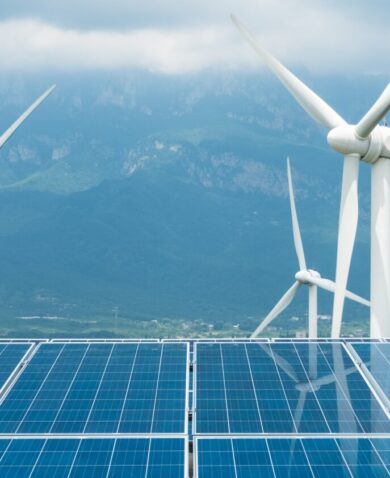
Know Your SDGs: All Hands on Deck for the World’s Oceans
July 16, 2015 | 3 Minute ReadSDG 14 aims to "conserve and sustainably use the oceans, seas and marine resources for sustainable development."
“I really don’t know why it is that all of us are so committed to the sea, except I think it’s because in addition to the fact that the sea changes, and the light changes, and ships change, it’s because we all came from the sea. And it is an interesting biological fact that all of us have in our veins the exact same percentage of salt in our blood that exists in the ocean, and, therefore, we have salt in our blood, in our sweat, in our tears. We are tied to the ocean. And when we go back to the sea – whether it is to sail or to watch it – we are going back from whence we came.” —John F. Kennedy, 1962
President Kennedy’s words echo the sentiments of many. The oceans are a source of intrigue and exploration. Covering over 70 percent of the planet and holding 97 percent of our water, the oceans impact everyone—not just the 50 percent of the population living within 40 miles of the coast.
Phytoplankton, tiny organisms living in the oceans, produce half of the oxygen we breathe. Conversely, these organisms, as well as the ocean’s water, are the largest carbon sinks on the planet.
Food security and global health rely on healthy oceans—one billion people depend on fish for protein. Further, ocean resources have produced some of our most important medicines combatting illnesses like cancer, AIDS and malaria. Given that 95 percent of the oceans remain unexplored, more solutions are likely out there
In spite of the above, human activity pollutes the oceans and depletes its resources. Ninety percent of fish stocks are subject to overfishing. Ocean acidification, caused by large amounts of carbon absorption, is killing phytoplankton and coral reefs—which host enormous levels of biodiversity, some reefs with up to 1,000 unique species per square meter. Further, a trash dump the size of Texas, coined, “the trash vortex,” swirls around in the north Pacific, harming wildlife and contaminating the water.
Sustainable development goal (SDG) 14, “Conserve and sustainably use the oceans, seas and marine resources for sustainable development,” responds to these growing problems. This overarching goal includes multiple sub-goals, like setting aside 10 percent of the oceans as protected area by 2020 (protected area is currently less than 3 percent); reducing significant marine pollution of all kinds by 2025; and by 2030, increasing the economic benefits for small island developing states and lesser developed countries from sustainable use of marine resources.
For the global community to meet these targets, it will take a lot of brainpower, dedication and hard work—and some of that work has already begun. At the stroke of a pen in 2014, President Obama expanded the Pacific Remote Islands National Marine Monument (a marine reserve) by about six times its current size, an area comparable to Peru.
Other organizations are using massive brainpower to create revolutionary technologies. The Ocean Cleanup is in the pilot stages of developing an ocean trash removal system that cleans the ocean of debris using floating barriers and the power of the ocean’s currents. Aimed for startup in 3-4 years’ time, the organization estimates that it could remove over 40 percent of the Pacific “trash vortex” in ten years.
Still, other organizations are working at the local level to transform how coastal communities interact with resources. Blue Ventures, for example, is working with communities in Madagascar to develop locally managed temporary fish reserves. Their model of local management and community buy-in is tremendously successful – in some cases showing an over 80 percent increase in caught fish after just one month of reservation.
Chemonics is also contributing to the global ocean conservation efforts. One select example is the Chemonics-implemented and USAID-funded Regional Program for the Management of Aquatic Resources and Economic Alternatives (MAREA), which worked in Central America to strengthen marine resource management and biodiversity conservation while improving the livelihoods of local populations. Among other achievements, the program trained 11,500 fishermen, government, and NGO officials and helped implement multinational plans for four popular fish species that prevent fishery depletion.
As President Kennedy said, we are tied to the oceans. The current trajectory of the seven seas, without intervention, is dismal with wide ramifications for global communities (coastal and inland). Nonetheless, with overarching goals, like SDG 14, combined with human will, ingenuity and effective collaboration, we can reverse course and make this a better century for the oceans.


























